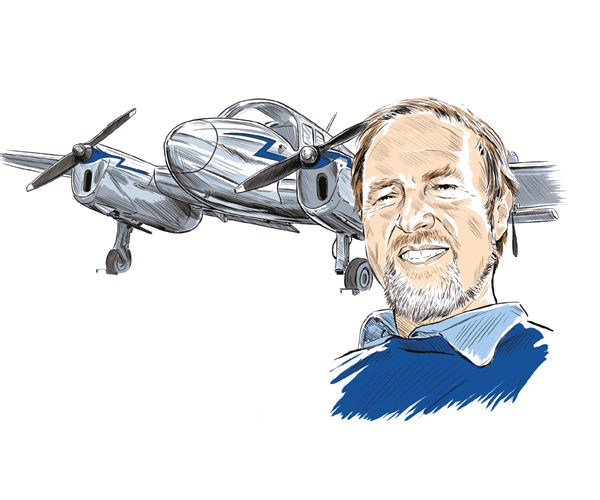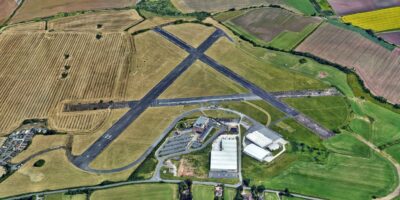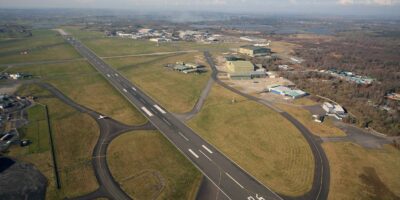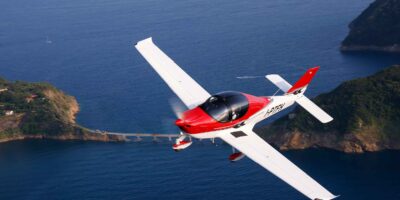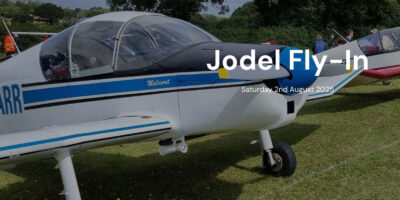This is a magazine concerned with flying in general and light aeroplanes in particular, but the principles which govern both now manage the passage of air over most things that move by their own power.
The flush glass, which is essential in a modern car, is a drag reducer in search of greater fuel economy. Same for the wing on a lorry’s cab which directs the air up and over the box. Look closer at the trailer and you might spot the rounded and raised edges which direct air out and away from the flanks to reduce skin friction.
When you cover many thousands of miles, these things become important for the bottom line, as well as the environment.
It’s also a tiresome fact that the modern motorsport, which is still as close to my heart as anything that flies, is now more about how the car moves through the air – and more important, sticks to the ground – than anything to do with how the tyres grip the road.
I still have a foot in both camps, so to speak, but I was trying to forge a career on four wheels about the time aerodynamics really began to influence how race cars were built, and equally significant, how they were driven.
I remember one young buck politely pointing out that I was slowing the car too much on the brakes and I had to get off the pedal and let the aero do the work. All very well, except that the car I was driving had already tried to spit me off while travelling beyond three figures in fifth gear. The young man’s advice was to leave it in sixth and not disturb the car’s aerodynamic balance…
“Aerodynamics really began to influence how race cars were built, and equally significant, how they were driven”
How this sort of thing all came about is an interesting footnote. In 1966, American racer and pioneer race car builder Jim Hall installed a huge barn-door wing on the tail of his Chaparral World Championship sports car, mounted directly to the suspension uprights rather than the body.
The wing was, in aircraft terms, upside down, so it produced downforce rather than lift.
Such things are familiar now, even to those who have no interest in either cars or aircraft, but in the mid-1960s, we didn’t have the internet and motorsport was as parochial as everything else, so Hall’s genius apparently went unnoticed in the Formula One firmament.
Folklore says that around the same time, Colin Chapman, boss of Team Lotus Grand Prix, spotted a homebuilt single-seater in one of the support races for Australia’s Tasman series, sporting a section of the rotor blade from a Hughes helicopter mounted on stilts above the car’s rear axle.
The blade was up there in clean air like Hall’s Chaparral wing, free from the turbulence created by the wheels and the rest of the car. Something similar duly made its first appearance in Formula One on Graham Hill’s Lotus 49 at the 1968 Monaco race.
The stilts proved as fragile as they looked, and although the rest of the constructors swiftly followed suit, wings on stilts were banned the following year, but the further application of aerodynamics was very much a genie which Messrs Hall and Chapman had released from the bottle.
Wings in some form became an essential feature at both ends of all top-level race cars, but in 1977, Chapman’s Lotus 78 appeared, sporting a pair of ground effect sidepods.
The world of motorsport would never be the same, again… Ground effect, as all pilots know, is the sometimes annoying, sometimes welcome, cushion of air which balloons below your Cherokee’s wings, and which makes it float along the runway instead of settling on like you intended.
In the Lotus 78, the effect was harnessed by a wing section in the sidepod, creating a low-pressure area that effectively sucked the car to the ground.
How this was discovered is the subject of many official histories, but the unofficial one that I prefer, comes verbatim from aerodynamicist Val Dare-Bryan – later to invent the aforementioned truck top and trailer wings.
Val was working on a method to stop racing hydroplanes flipping when the slipstream caught the bridge between the hulls and he came up with a wing section that would reduce the pressure between the bridge and the water.
He apparently mentioned his findings to fellow aero man Peter Wright, then working at Lotus, and the rest as they say, is history. Mario Andretti took next year’s fully developed ground-effect Lotus 79 imperiously to the 1978 world title.
Jim Hall wasn’t a pilot, which somehow makes his inspiration all the more remarkable, but Chapman was a keen flyer – piloting his JPS liveried Cessna 414 and Piper Navajo to and from all the European races.
After his untimely death, Lotus the company, went on to develop several aircraft projects that its founder had started – notably the Stargazer Canard Microlight, initially developed with Burt Rutan, and the modular two and four-cylinder four stroke aero engines which could so easily have done what Rotax eventually accomplished in the early 1990s.
Both projects foundered for commercial rather than technical reasons, and the engines – which drove the propeller via the 2:1 reduction for the camshaft – are on display in the Lotus technical museum next to the factory, built on the former American WWII Hethel airfield.
The same place from which Colin Chapman flew his Navajo, whatever the weather…


